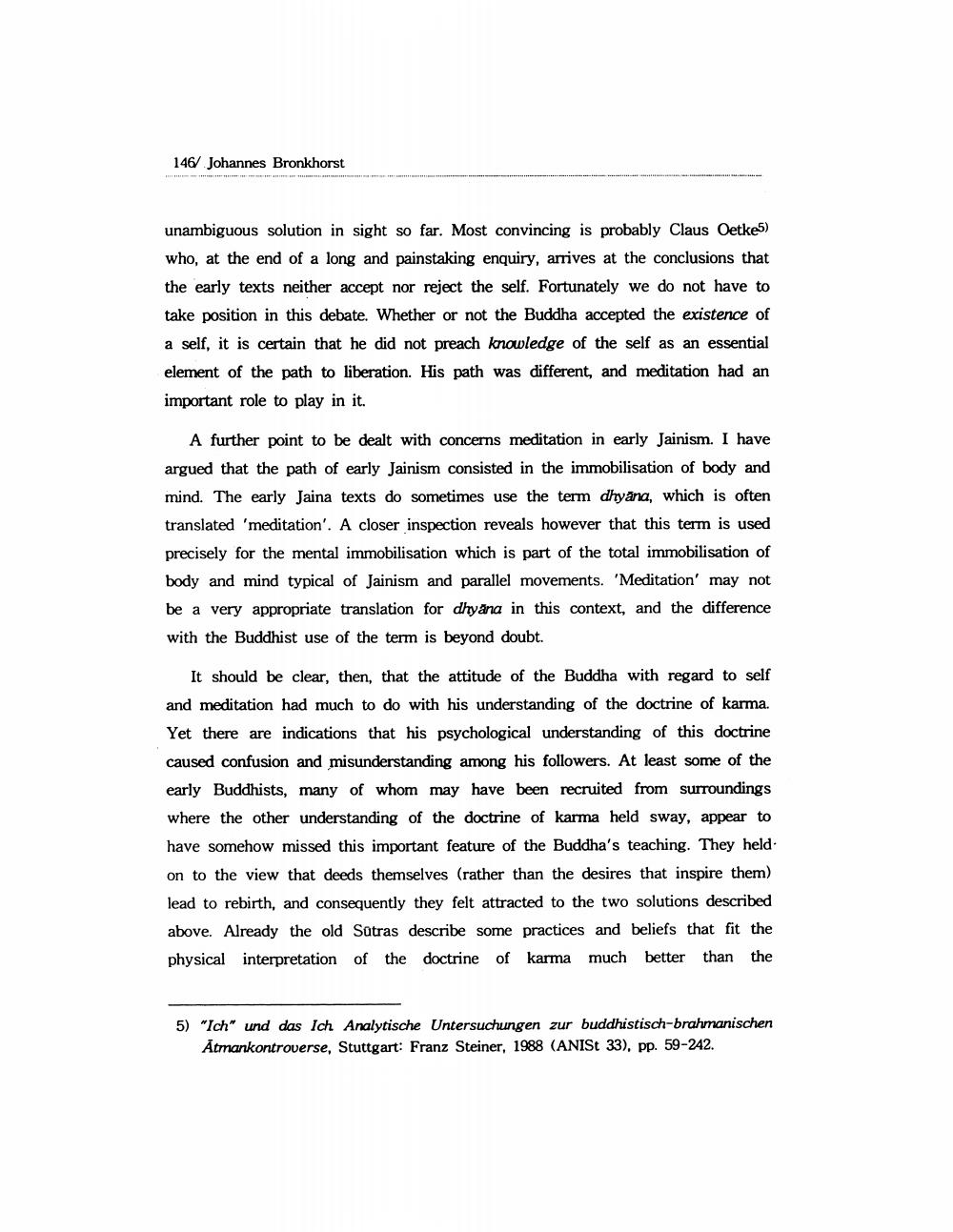Book Title: Self And Meditation In Indian Buddhism Author(s): Johannes Bronkhorst Publisher: Johannes Bronkhorst View full book textPage 6
________________ 146/ Johannes Bronkhorst unambiguous solution in sight so far. Most convincing is probably Claus Oetke) who, at the end of a long and painstaking enquiry, arrives at the conclusions that the early texts neither accept nor reject the self. Fortunately we do not have to take position in this debate. Whether or not the Buddha accepted the existence of a self, it is certain that he did not preach knowledge of the self as an essential element of the path to liberation. His path was different, and meditation had an important role to play in it. A further point to be dealt with concerns meditation in early Jainism. I have argued that the path of early Jainism consisted in the immobilisation of body and mind. The early Jaina texts do sometimes use the term dhyana, which is often translated 'meditation'. A closer inspection reveals however that this term is used precisely for the mental immobilisation which is part of the total immobilisation of body and mind typical of Jainism and parallel movements. 'Meditation may not be a very appropriate translation for dhyana in this context, and the difference with the Buddhist use of the term is beyond doubt. It should be clear, then, that the attitude of the Buddha with regard to self and meditation had much to do with his understanding of the doctrine of karma. Yet there are indications that his psychological understanding of this doctrine caused confusion and misunderstanding among his followers. At least some of the early Buddhists, many of whom may have been recruited from surroundings where the other understanding of the doctrine of karma held sway, appear to have somehow missed this important feature of the Buddha's teaching. They held on to the view that deeds themselves (rather than the desires that inspire them) lead to rebirth, and consequently they felt attracted to the two solutions described above. Already the old Satras describe some practices and beliefs that fit the physical interpretation of the doctrine of karma much better than the 5) "Ich" und das Ich Analytische Untersuchungen zur buddhistisch-brahmanischen Ātmankontroverse, Stuttgart: Franz Steiner, 1988 (ANISt 33), pp. 59-242.Page Navigation
1 ... 4 5 6 7 8 9 10 11 12 13 14 15 16 17 18 19
